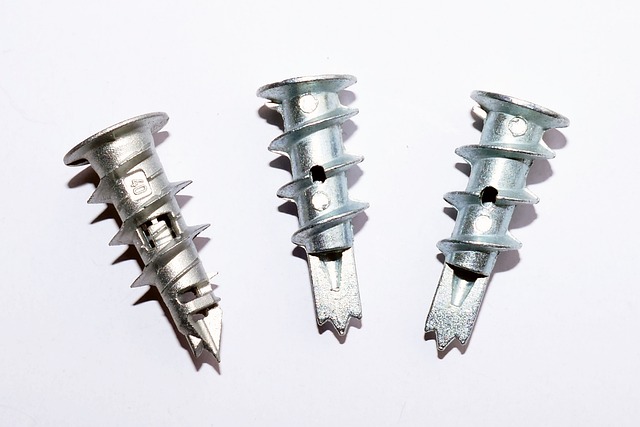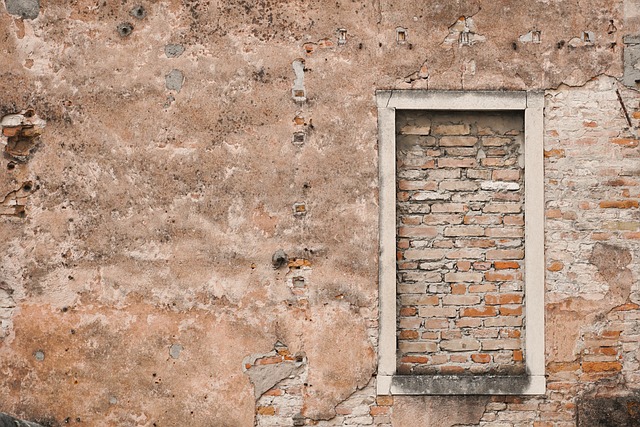Stem wall repair, focusing on internal crack sealing, is vital for maintaining both structural integrity and visual appeal in buildings. This process addresses cracks within stems caused by settlement or frost heaving, preventing further damage and moisture intrusion. Professionals use advanced sealants to fill internal fractures, enhancing longevity while preserving historical character. Regular inspections, proper materials (e.g., epoxy, polyurethane), and meticulous steps ensure effective crack sealing, reducing risks like mold growth and improving energy efficiency. Prompt action on stem wall repair is key to maintaining structural soundness and property value over time.
Internal crack sealing is a critical stem wall repair technique that addresses structural weaknesses and prevents further damage. This comprehensive guide delves into the intricacies of this process, highlighting its significance in maintaining robust stem walls. We’ll explore why identifying cracks early is vital, the essential materials and tools required, and step-by-step instructions for successful internal crack sealing. Additionally, we’ll discuss common challenges, best practices, cost-effective solutions, and emphasize the impact of prompt stem wall repair.
Understanding Internal Crack Sealing: A Vital Stem Wall Repair Technique

Internal crack sealing is a specialized technique within the broader realm of stem wall repair, crucial for maintaining structural integrity and aesthetic appeal in buildings. It involves the meticulous filling and sealing of cracks that form within the stems or columns of a structure, often as a result of settlement, frost heaving, or other environmental factors. These internal fractures can compromise the stability of the entire wall system if left unaddressed, making prompt and professional repair vital.
This process requires skilled professionals who understand the unique challenges posed by stem wall construction. By using advanced sealants and materials, they fill the cracks from the inside, preventing further damage and moisture intrusion. This approach differs from external crack sealing, offering a more nuanced solution tailored to the specific needs of internal structures. Effective internal crack sealing not only enhances the structural longevity of buildings but also preserves their historical character and architectural integrity.
The Significance of Identifying Cracks in Stem Walls

Identifying cracks in stem walls is a critical step in any building maintenance or renovation project, especially for structures with masonry construction. These cracks, though often small, can signify larger structural issues and potential water damage. Ignoring them could lead to more severe problems, such as compromised wall integrity, mold growth, and reduced energy efficiency due to poor insulation. Regular inspections are key to early detection; even the tiniest crack can be a sign of settlement or shifting in the foundation.
Prompt action on stem wall repair is essential for maintaining the building’s structural soundness and longevity. Sealing these cracks not only prevents water penetration but also stops air leaks, improving energy performance. It’s an investment in the property’s long-term health and value, ensuring that any visible cracks are more than just aesthetic issues—they’re addressed before they become costly, time-consuming problems.
Materials and Tools Essential for the Job

When it comes to internal crack sealing, particularly for stem wall repair, having the right materials and tools is paramount. You’ll need a variety of items to ensure the job is done effectively and durably. Start with high-quality epoxy or polyurethane-based sealants, which are known for their strength and flexibility, making them ideal for closing cracks in masonry walls. These sealants come in different forms, from injectable liquids to gun-applied pastes, catering to various crack sizes and levels of accessibility.
Complementing these with appropriate tools such as injection guns, silicone guns, or caulk guns will enable precise application of the sealant. Don’t forget protective gear like gloves, goggles, and a respirator, as these materials may emit harmful fumes. Additionally, a pressure washer is useful for cleaning the cracks before sealing to ensure better adhesion. For more intricate stem wall repair work, you might require specialized tools like chisels, hammers, and wire brushes to prepare the cracked surface adequately.
Step-by-Step Guide to Effective Internal Crack Sealing

To effectively seal internal cracks, especially in stem walls, follow this step-by-step guide. Begin by thoroughly cleaning the crack and removing any loose debris or existing sealant using a wire brush or vacuum. This ensures proper adhesion for the new sealant. Next, apply a compatible epoxy or polyurethane-based crack filler using a putty knife, filling the crack completely. For larger cracks, consider using a two-part epoxy system for enhanced strength and durability. Allow the filler to cure according to the manufacturer’s instructions before proceeding.
Once cured, lightly sand the sealed area with fine-grit sandpaper to ensure a smooth finish. Clean any dust or residue and apply a final coat of sealant if needed. Stem wall repair requires meticulous attention to detail, but these steps will help achieve a robust internal crack sealing solution, ensuring structural integrity and preventing further damage.
Common Challenges Faced During Stem Wall Repair

Stem Wall Repair, while crucial for maintaining structural integrity, often comes with several challenges. One of the most common difficulties lies in identifying and addressing hidden cracks, especially in older structures. These internal cracks can be subtle and difficult to detect, as they may not appear on the surface or show immediate signs of instability. Professional inspectors use advanced techniques, such as moisture detection and thermal imaging, to uncover these hidden defects, which are then addressed during the repair process.
Another challenge is ensuring proper sealing. Stem walls, being integral parts of a building’s foundation, require meticulous attention when sealing cracks. Inadequate sealing can lead to ongoing moisture infiltration, which not only compromises the structural integrity but also fosters mold growth and other related issues. Contractors employ specialized sealants designed for high-moisture environments, along with precise application techniques, to guarantee a robust and durable seal that prevents water intrusion and promotes long-term stability.
Best Practices for Ensuring Long-Lasting Results

To ensure long-lasting results with internal crack sealing, especially in stem wall repair, several best practices should be followed. Firstly, prepare the surface thoroughly by cleaning and removing any loose debris or existing sealants. This step is crucial as it ensures good adhesion for the new sealant. Next, assess the extent of the cracks to determine the appropriate sealer type; flexible sealants are ideal for accommodating structural movement in stem walls.
Application techniques also play a significant role. Use a high-quality applicator to ensure precise and even coating. For larger cracks, consider using a specialized crack injection system to achieve deep penetration and complete filling. Additionally, allowing the sealant to cure fully under recommended conditions is essential; this may involve maintaining specific temperature and humidity levels for the specified time period.
Cost-Effective Solutions for Internal Crack Sealing

Internal crack sealing can be a cost-effective solution for maintaining structural integrity and preventing further damage, especially in older buildings or those with stem wall construction. One of the most budget-friendly methods is using epoxy injection, which involves injecting a liquid epoxy into the cracked area to fill and seal it. This technique is highly effective for small to medium-sized cracks and can be quickly done on-site, minimizing disruption.
For larger or more complex cracks, polymeric sealants offer an affordable alternative. These sealants are flexible and durable, providing long-term protection against moisture infiltration and further crack propagation. They are easy to apply and don’t require specialized equipment, making them accessible for both professional contractors and DIY enthusiasts. Combining these cost-effective solutions with regular maintenance checks can significantly extend the lifespan of your structure, ensuring a sturdy and safe environment.
Conclusion: The Impact of Prompt Stem Wall Repair

Prompt stem wall repair plays a pivotal role in ensuring the longevity and structural integrity of buildings, especially those with concrete construction. When cracks appear in these walls, addressing them swiftly becomes paramount. Neglecting stem wall repairs can lead to more significant structural damage over time, impacting both the building’s stability and overall value.
By promptly sealing and repairing these cracks, homeowners and builders can mitigate potential hazards, prevent water intrusion, and maintain the aesthetic appeal of the structure. Effective stem wall repair is a game-changer in preserving the building envelope, ensuring that the foundation remains robust and secure for years to come.
